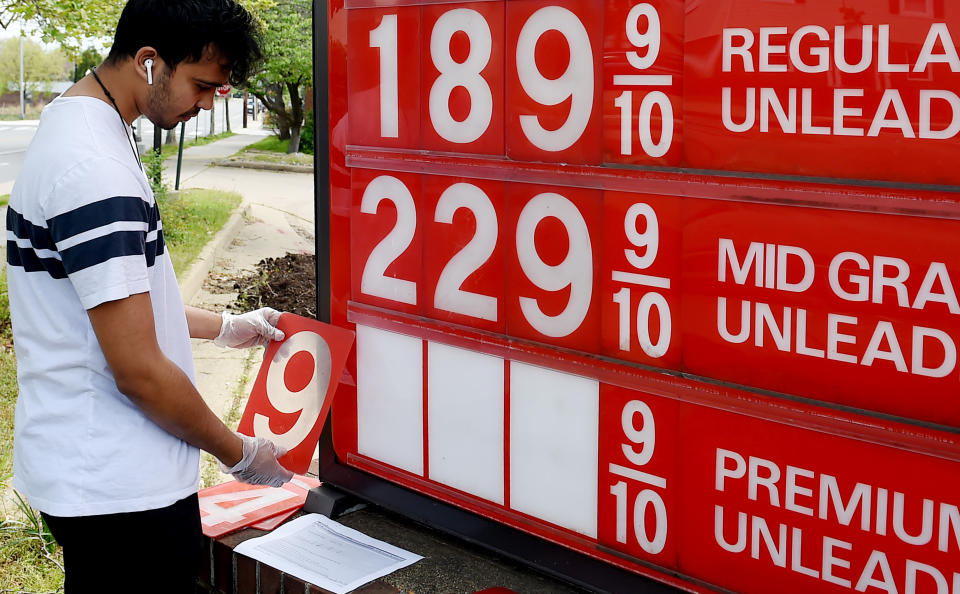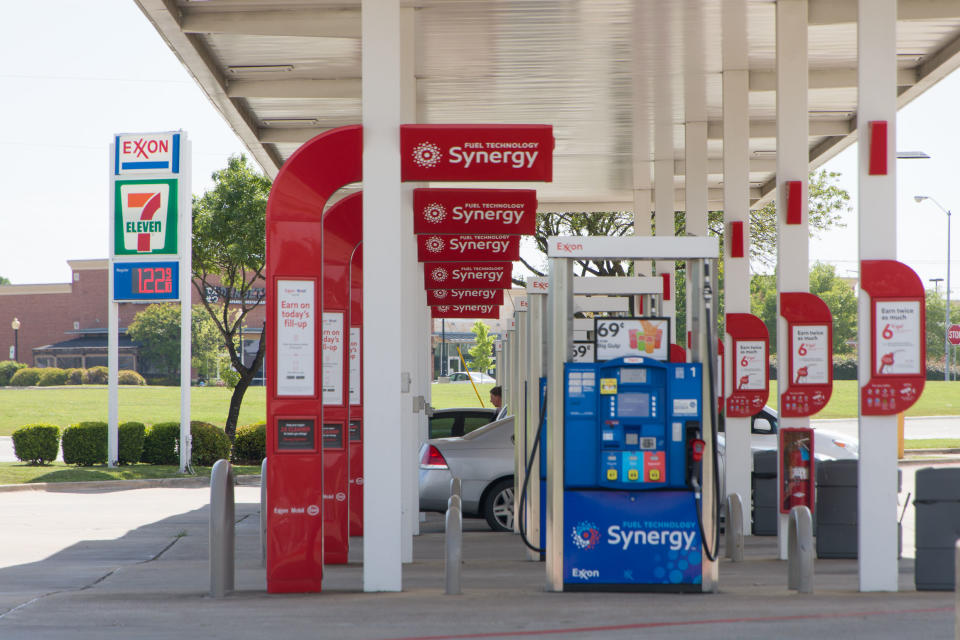Here's why gas prices won't go negative like crude oil
The price of crude oil this week went negative for the first time ever. But don’t expect gas stations to advertise free gas in the coming weeks or months because of it, according to experts, though lower prices are on the way.
That’s because the price posted at the pump is determined by more than just the price of crude oil.
The cost of crude oil makes up roughly 50% to 60% of the price of gasoline, Patrick De Haan, a spokesperson for GasBuddy, told Yahoo Money. But the final price also reflects gasoline’s journey from crude to gas, and that includes refinement, storage, and transportation to a filling station.
Your preferred pump is also paying less for its gas, but isn’t passing those savings onto you.
“Your local gas station is selling less gasoline,” De Haan said, “but their margins are two to three times what they normally are.”

Experts believe the calculus of what determines the gasoline price is about to shift, too, thanks to low demand and high supply — gasoline storage containers are at or near capacity.
“We may be at a point now where a third of the cost of gasoline is based on the price of crude oil,” De Haan said, with taxes making up half or two-thirds. “Then the remaining, say, 23% could be the margin that a station is taking in.”
‘National average could drop another 30 cents’
Experts don’t think prices are done falling and more states could see prices under $1 per gallon. Prices may even struggle to hit $2 per gallon this summer across the country, traditionally known as the driving season.
The national gas price average for regular unleaded hit $1.800 on Wednesday, according to AAA. Compared with last year’s national average of $2.842, gas is more than a dollar cheaper in the last 12 months with much of the decline happening in just the past eight weeks.
“I expect the national average could drop another 30 cents a gallon to its lowest level since 2004,” De Haan said. “If we get there, that would be $1.49 a gallon. I think that's within the realm of possibility.”
‘Really, really bad’ to stock up on gas

Many reasons that people drive — joyriding, visiting others, and traveling for vacations — are a violation of stay-at-home and shelter-in-place mandates in most states, so cars should continue to remain idle. But even hoarding gas at low prices is futile and even detrimental for the oil market, according to De Haan.
Filling up is essentially just moving gasoline “from one storage capacity to somebody's tank instead of the station” without addressing the cause of weakened demand, De Haan said.
Americans filling up en masse could create a bigger problem by exacerbating the current supply issues in the country.
“It would be really, really bad for people to go out and start buying gasoline. There's no need to,” Devin Gladden, AAA spokesperson, told Yahoo Money. “That's the last thing [we need] given the unprecedented nature of where we are with demand destruction.”
‘Going to impact prices for months to come’

Those worried about missing out on a deal should know that low prices are going to linger far longer than most people probably expect.
Even once the country returns to some semblance of normalcy, the demand for gasoline might never reach its previous highs, both Gladden and De Haan said. For instance, those working from home might discover that it worked so well that they want to make what was initially a temporary arrangement into a permanent one.
“We could say that that coronavirus is going to impact prices for months to come,” Gladden said.
Stephanie is a reporter for Yahoo Money and Cashay, a new personal finance website. Follow her on Twitter @SJAsymkos.
Read more:
'Antidote to anxiety is control': The psychology behind the coronavirus panic buying
‘Never applied before’: Americans are signing up for food stamps in droves
Illegal Tender podcast: How 'MLM' schemes turn regular lives upside down
Follow Yahoo Finance on Twitter, Facebook, Instagram, Flipboard, SmartNews, LinkedIn, YouTube, and reddit.

 money
money 
